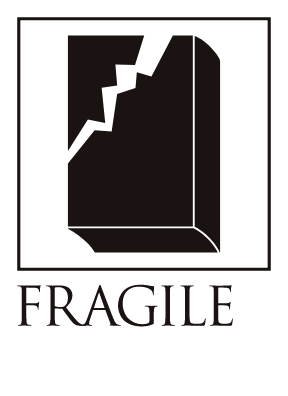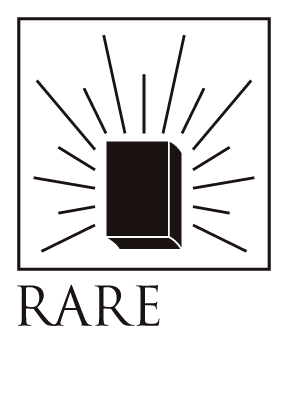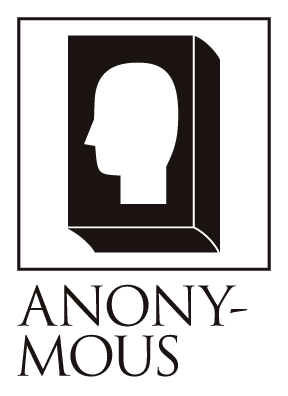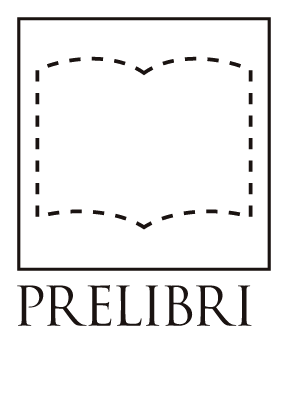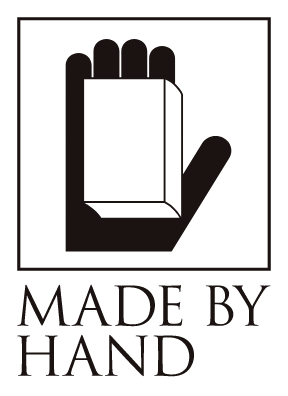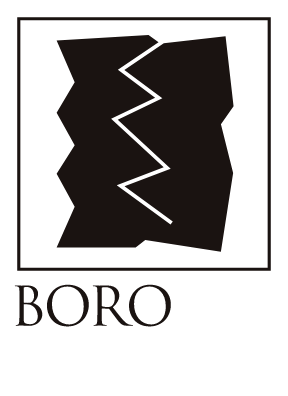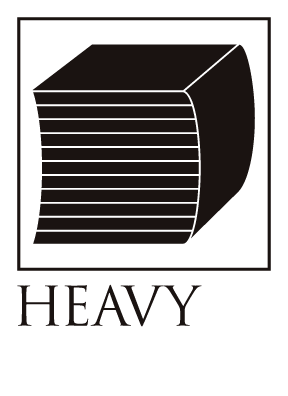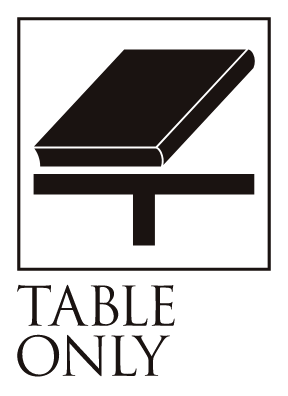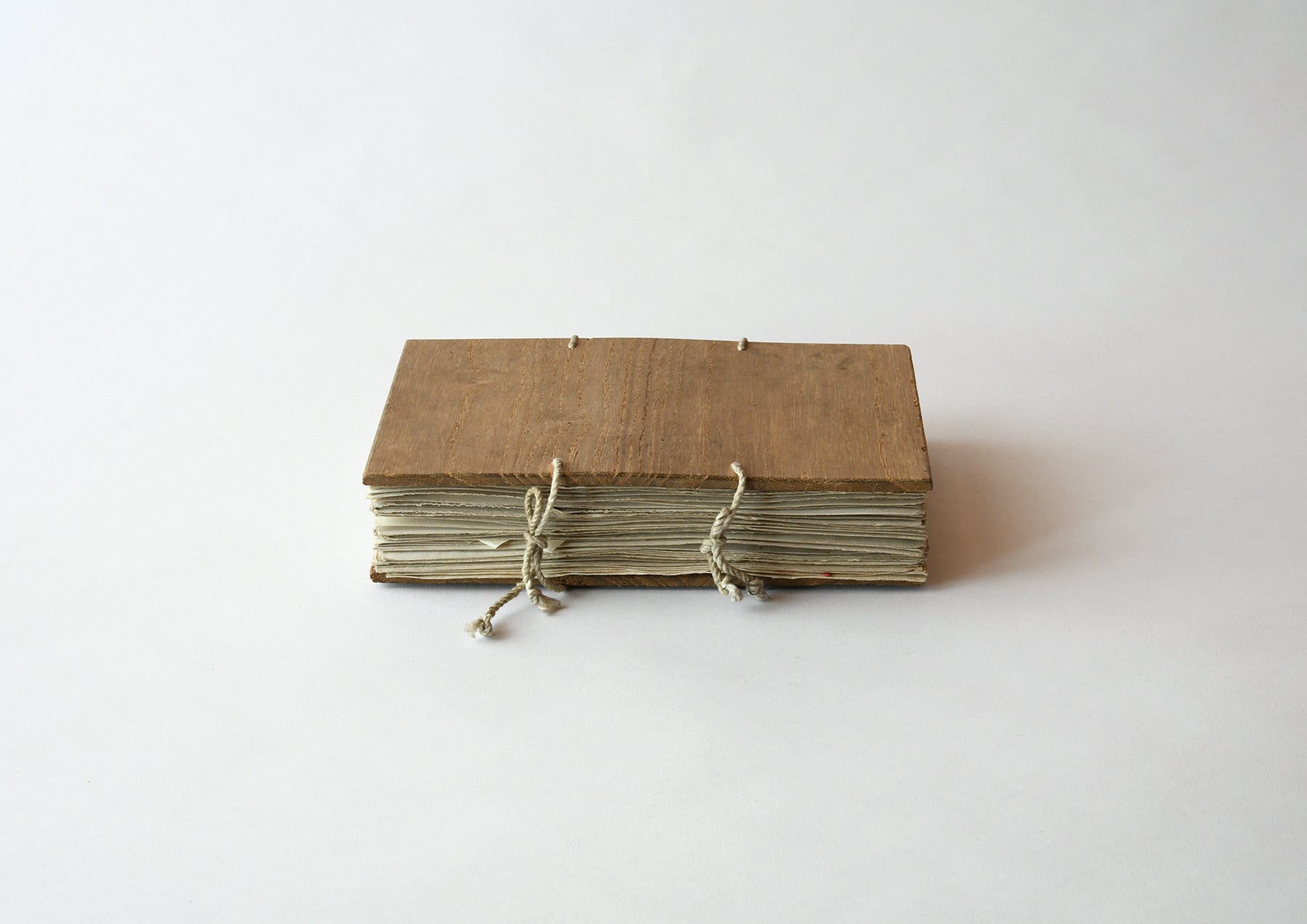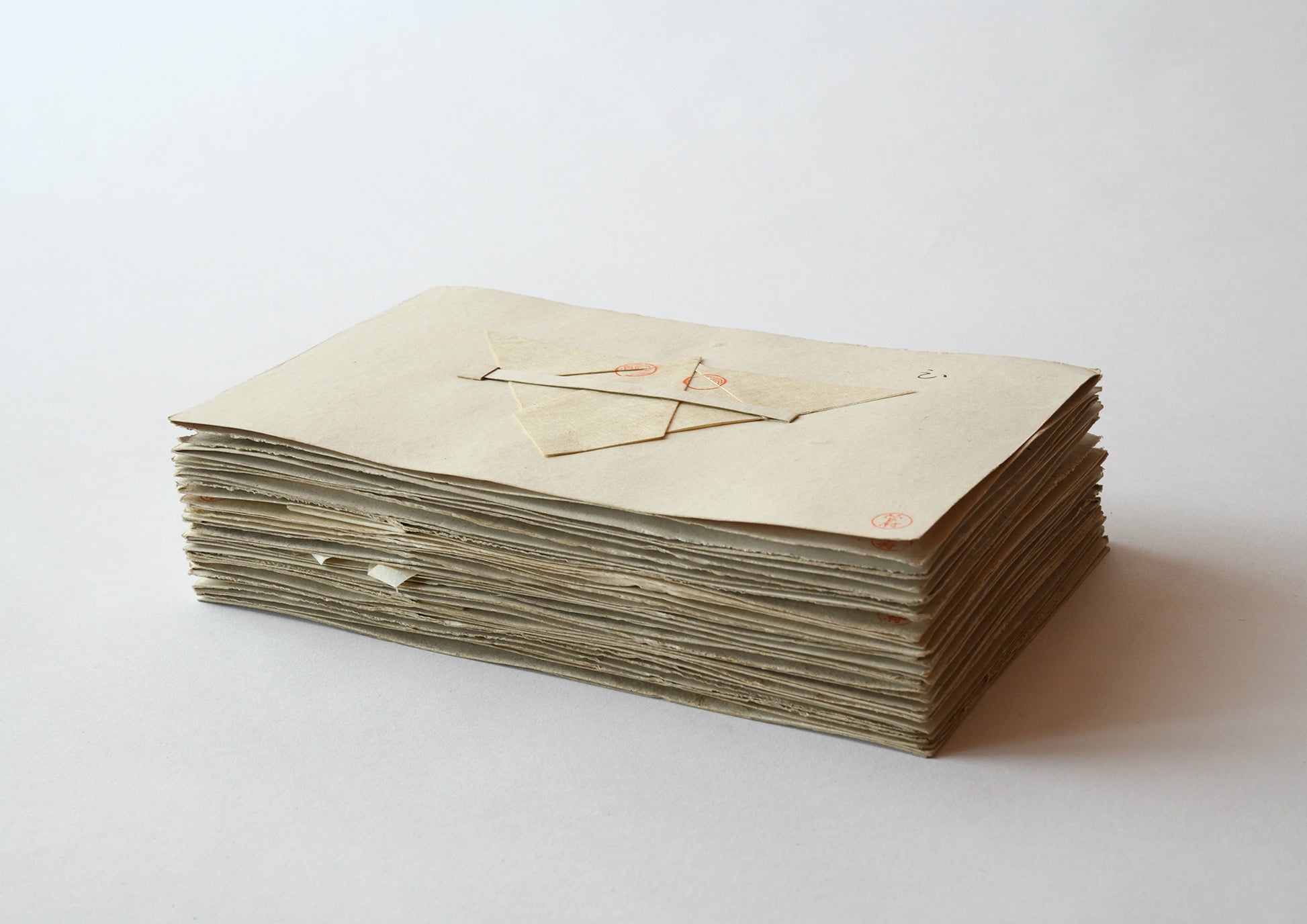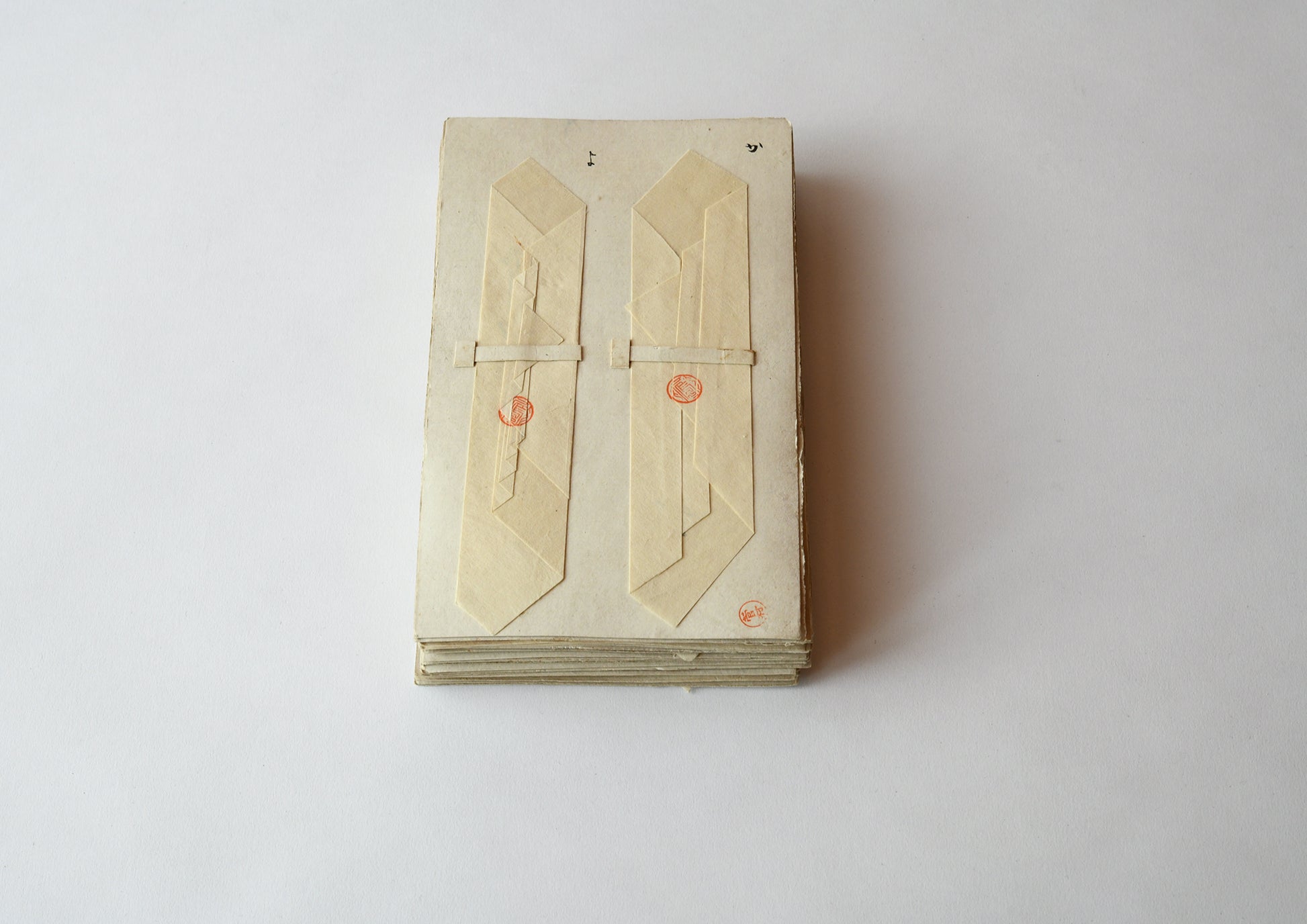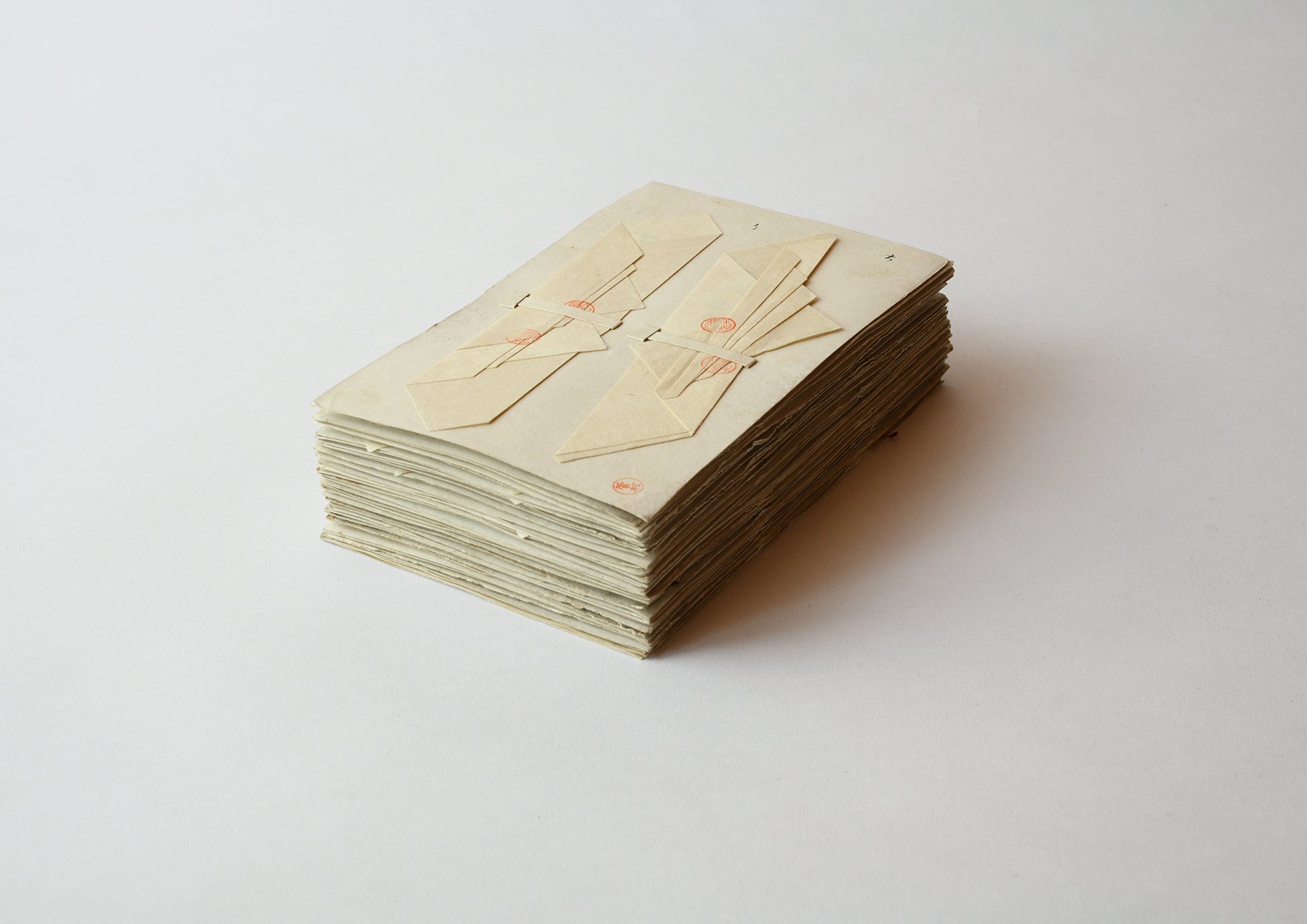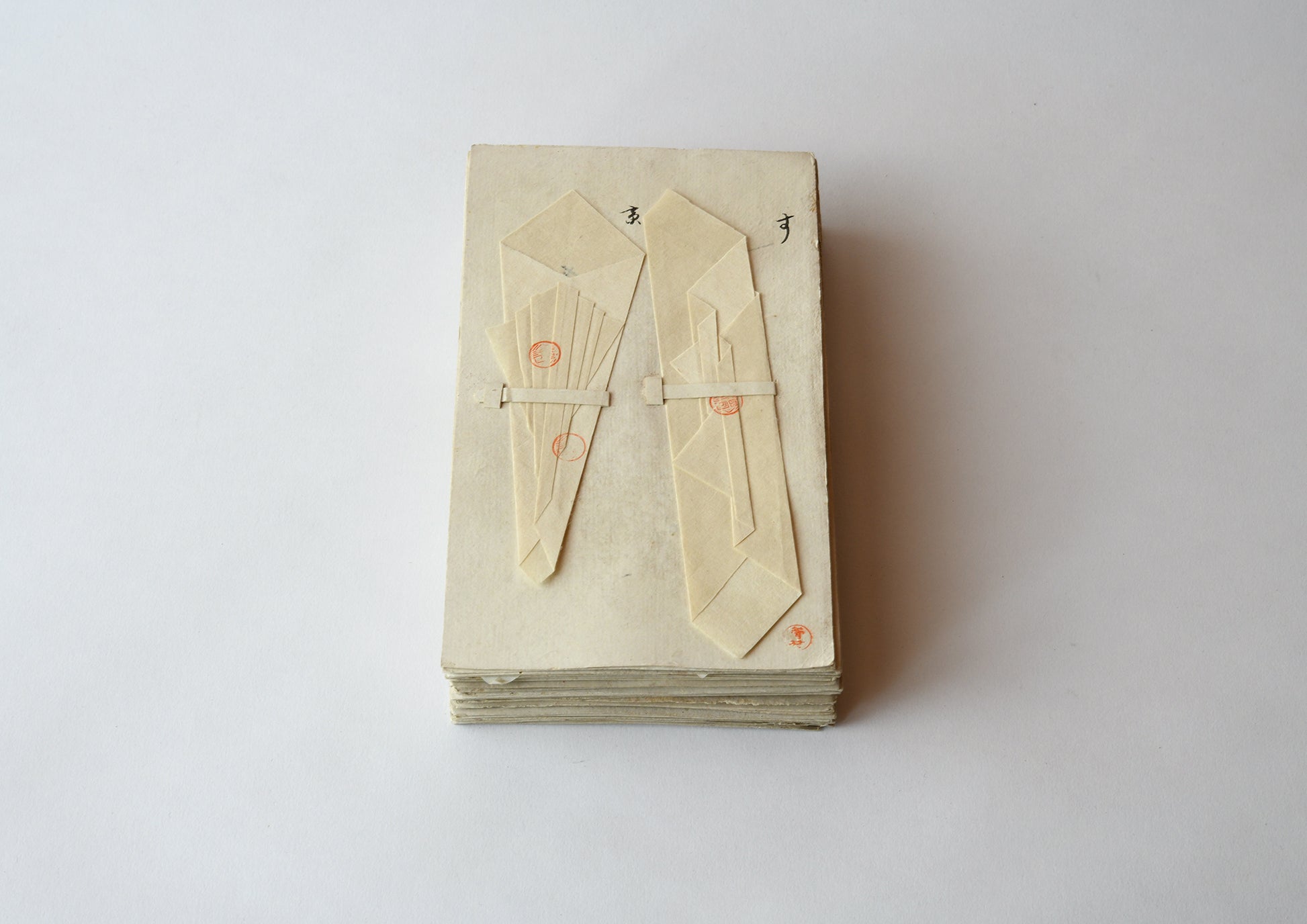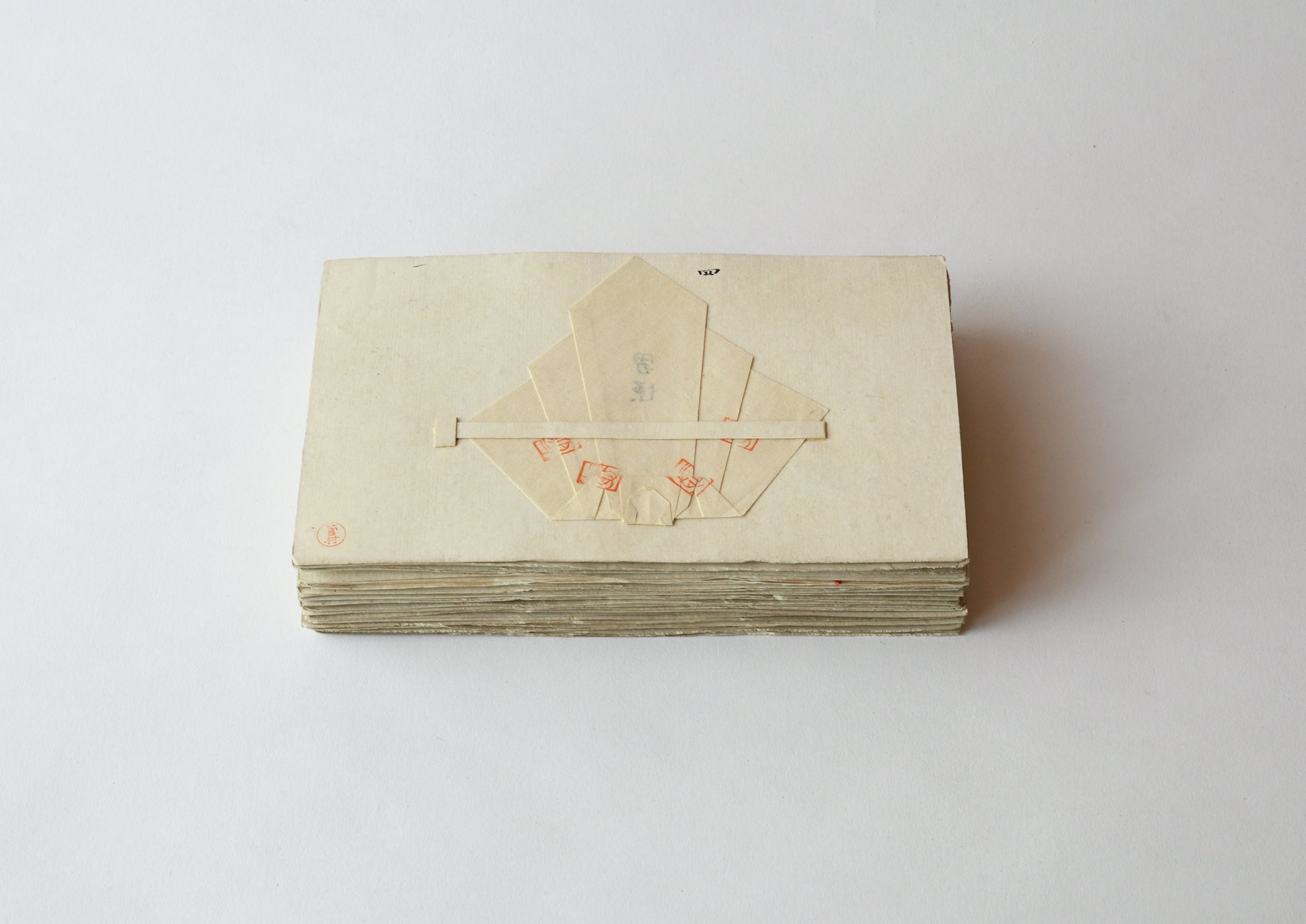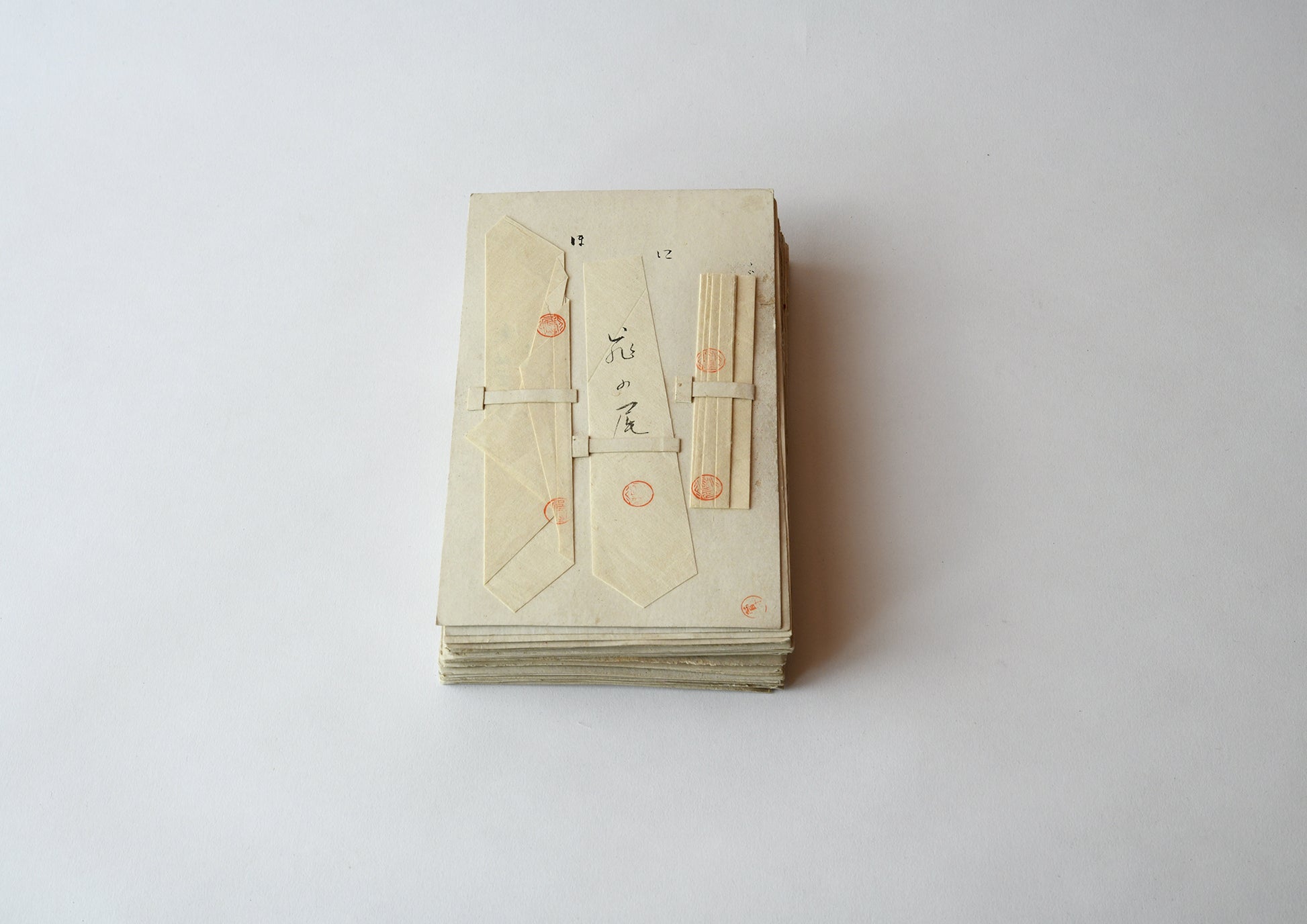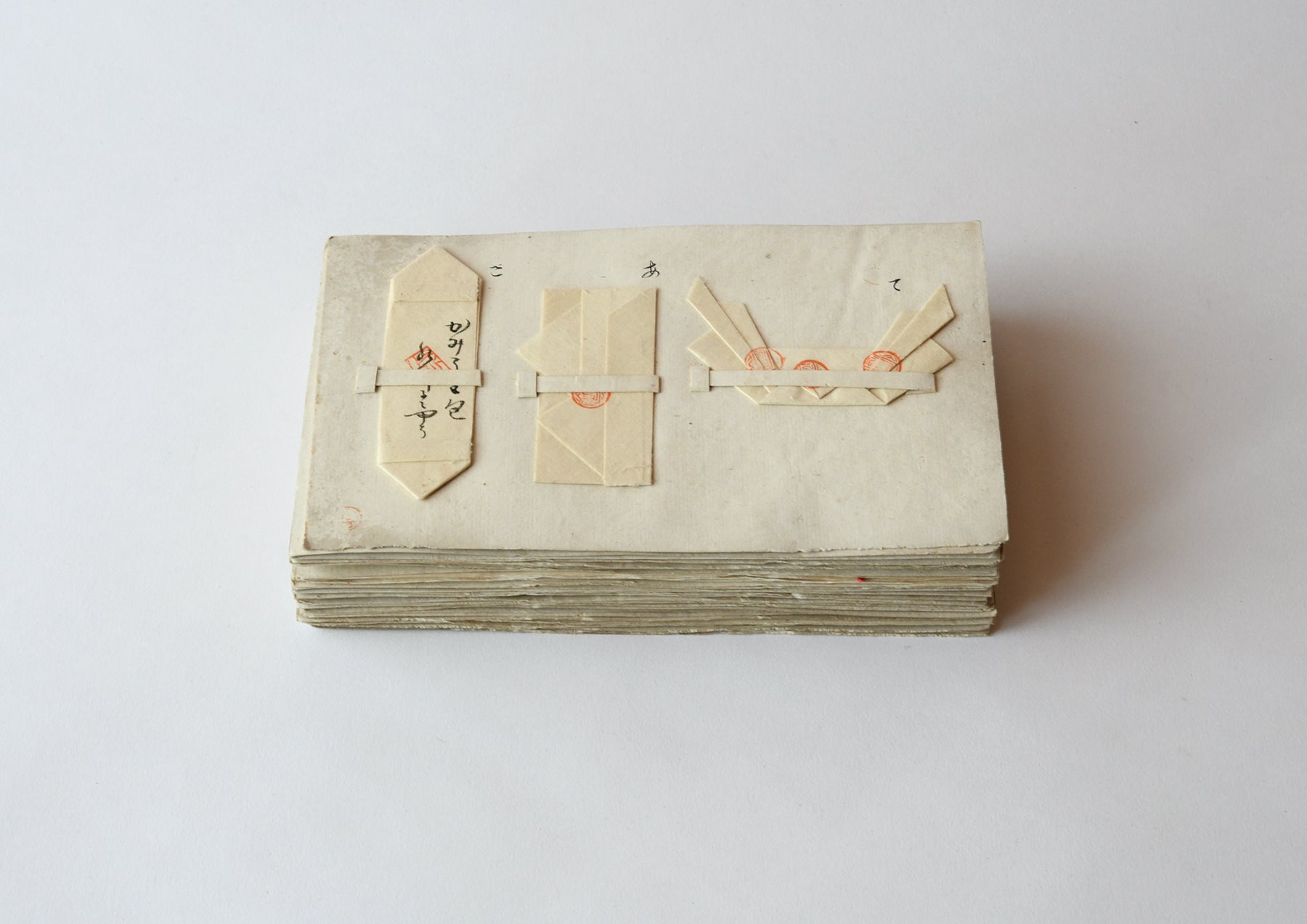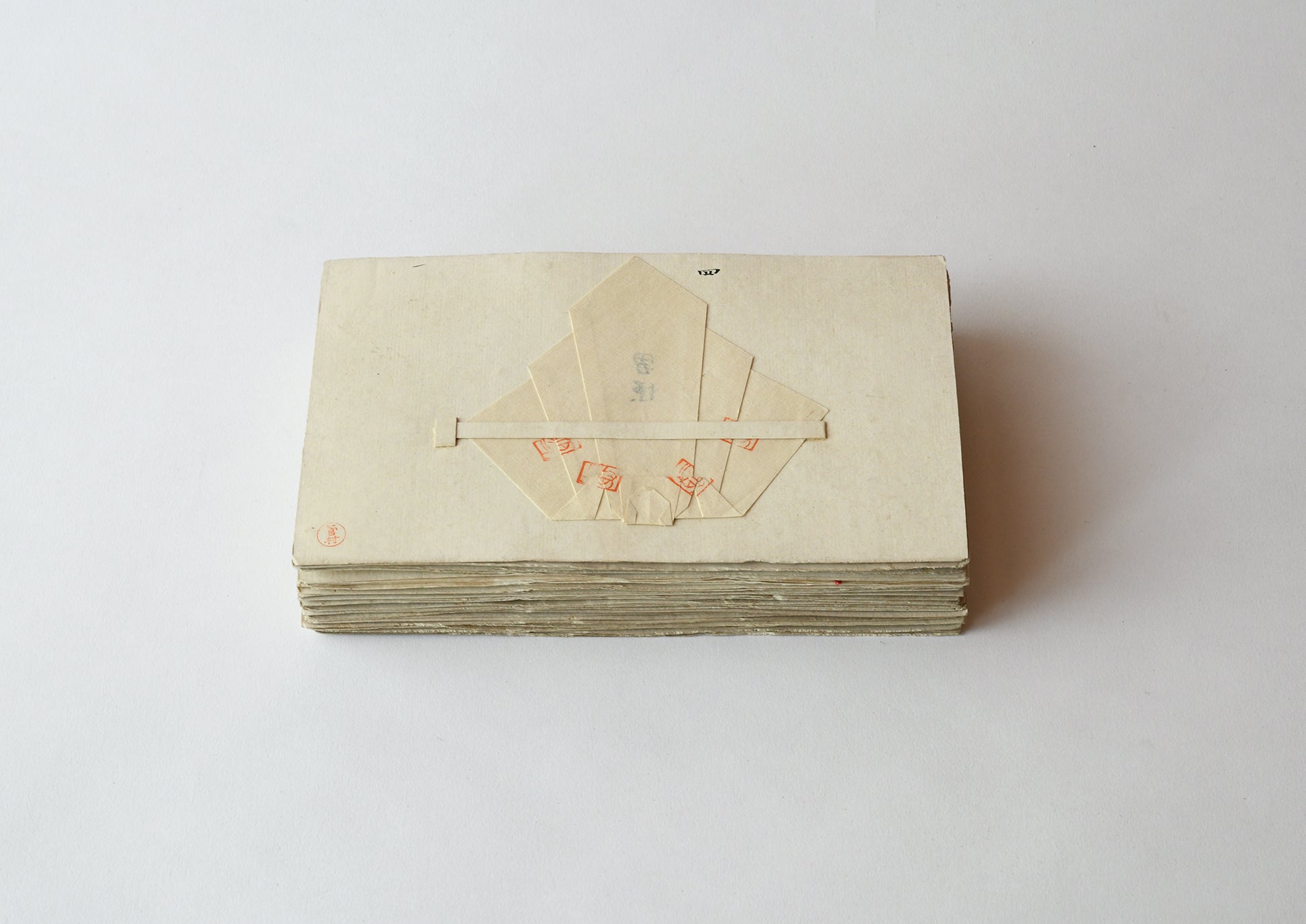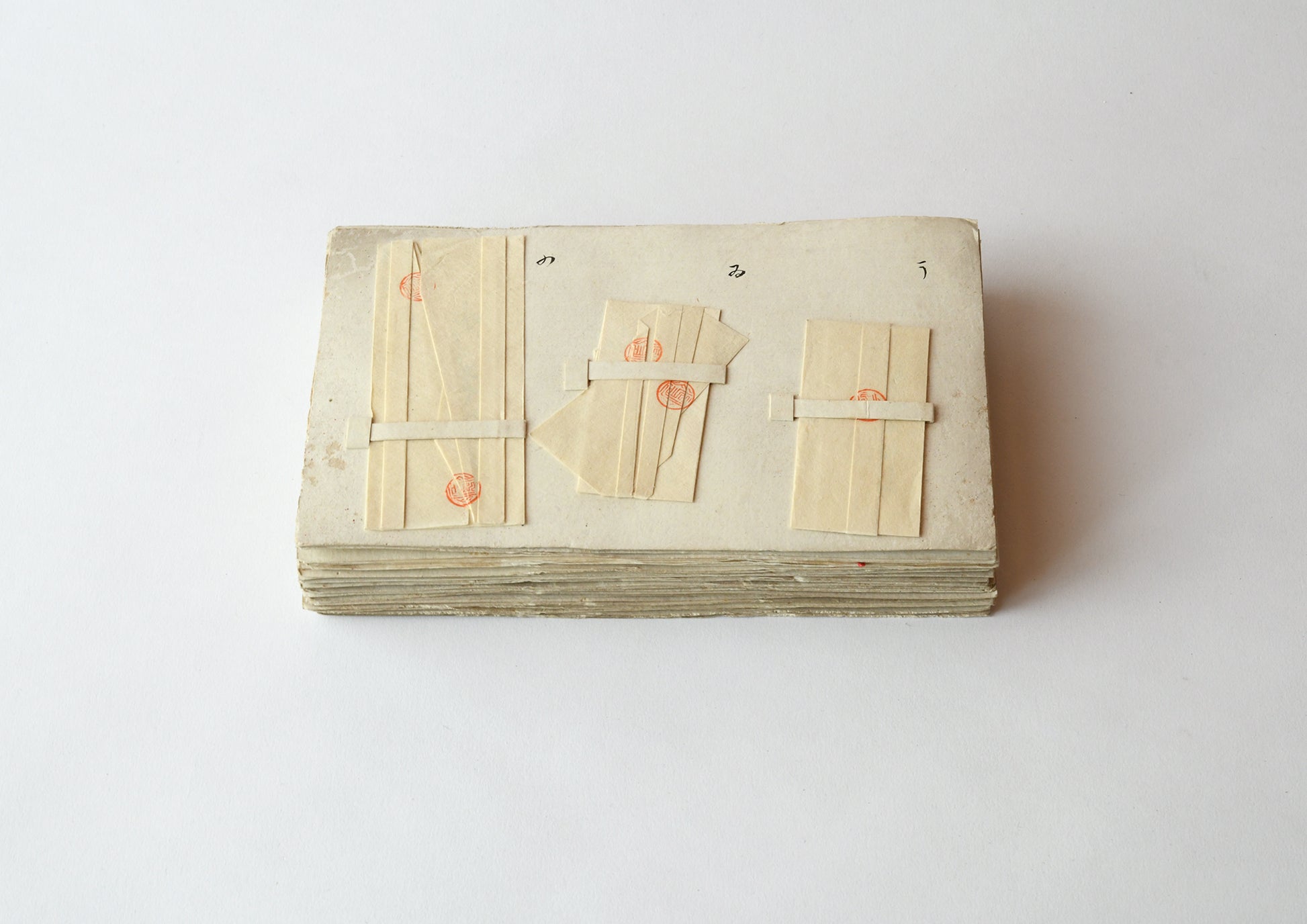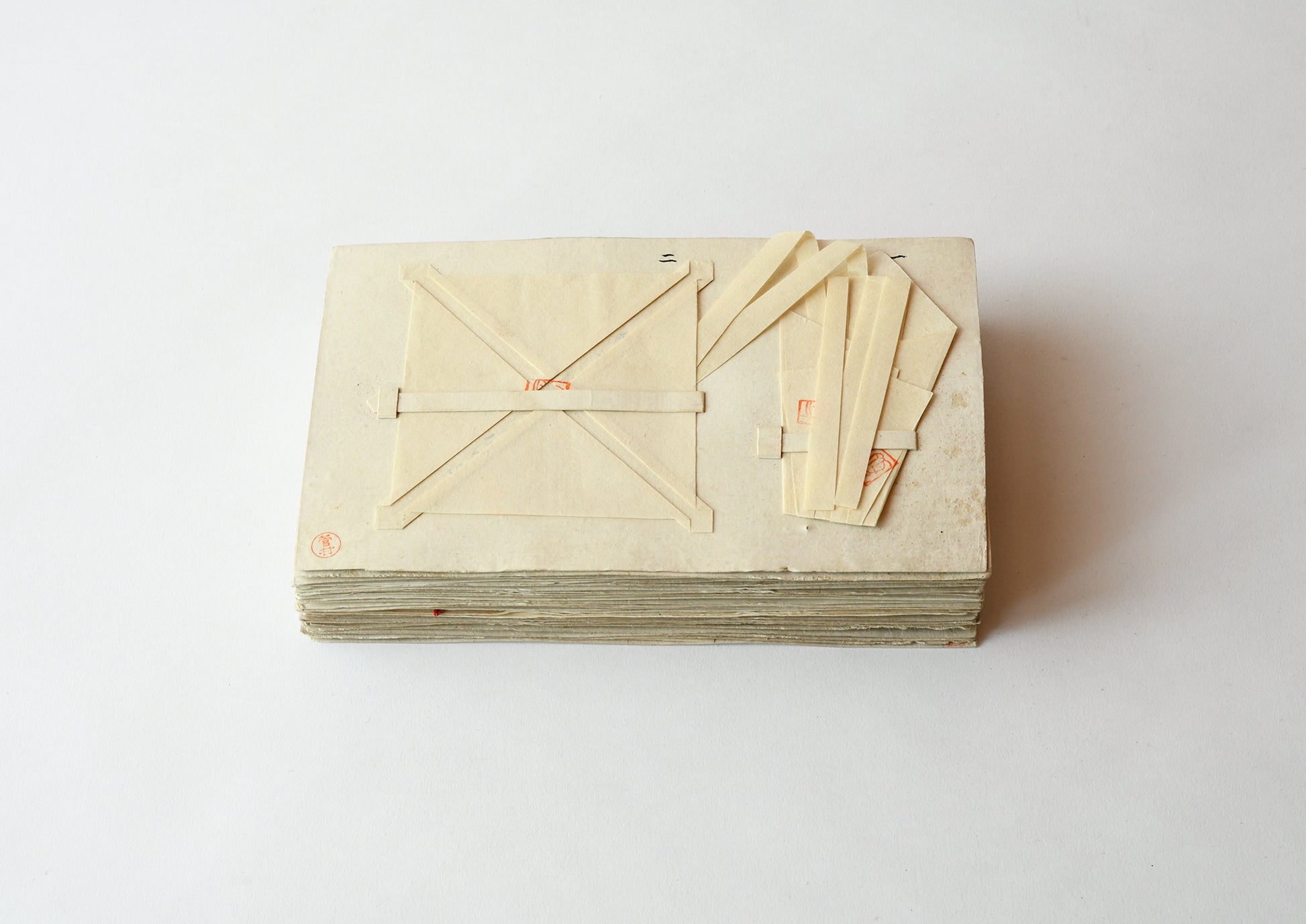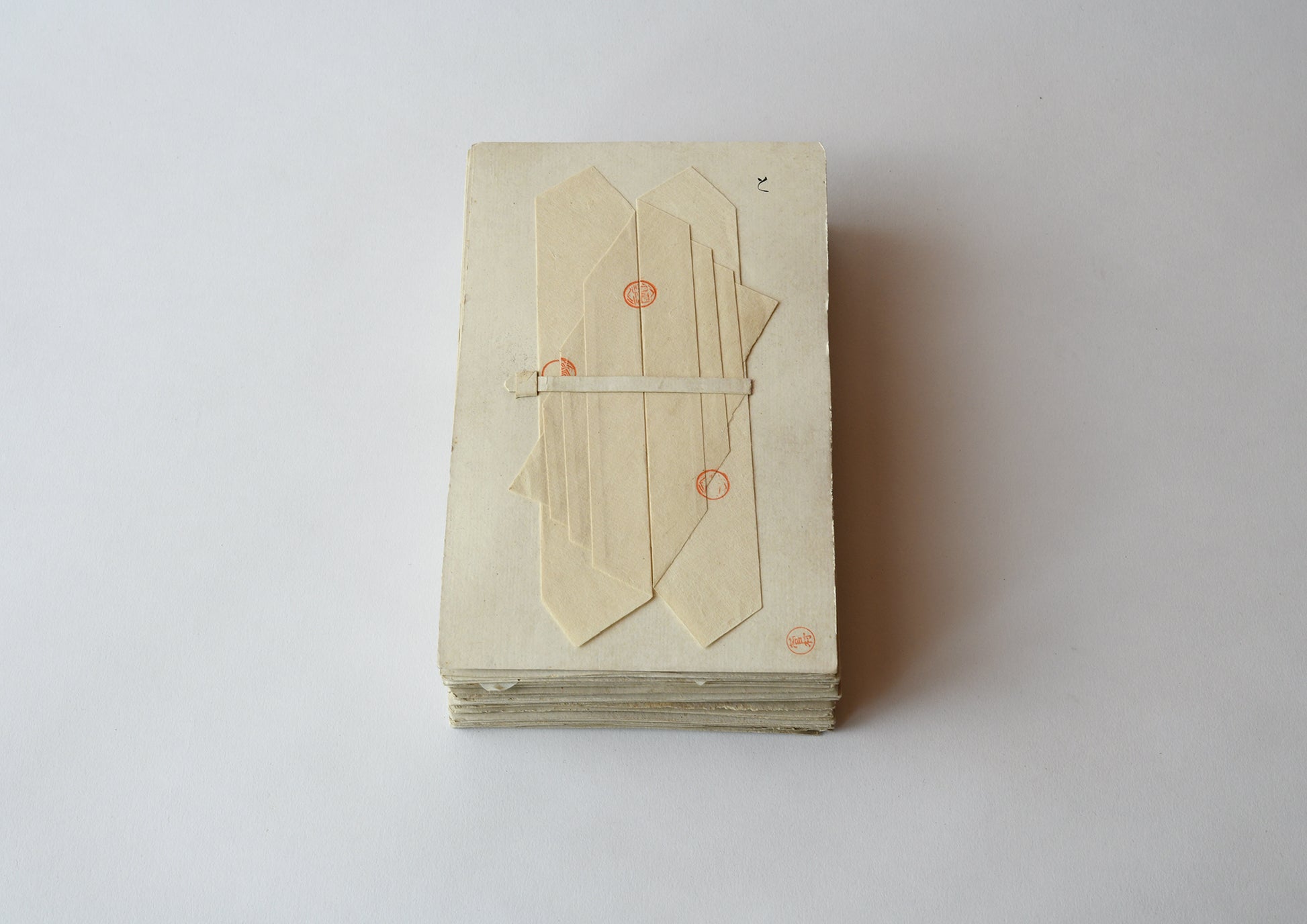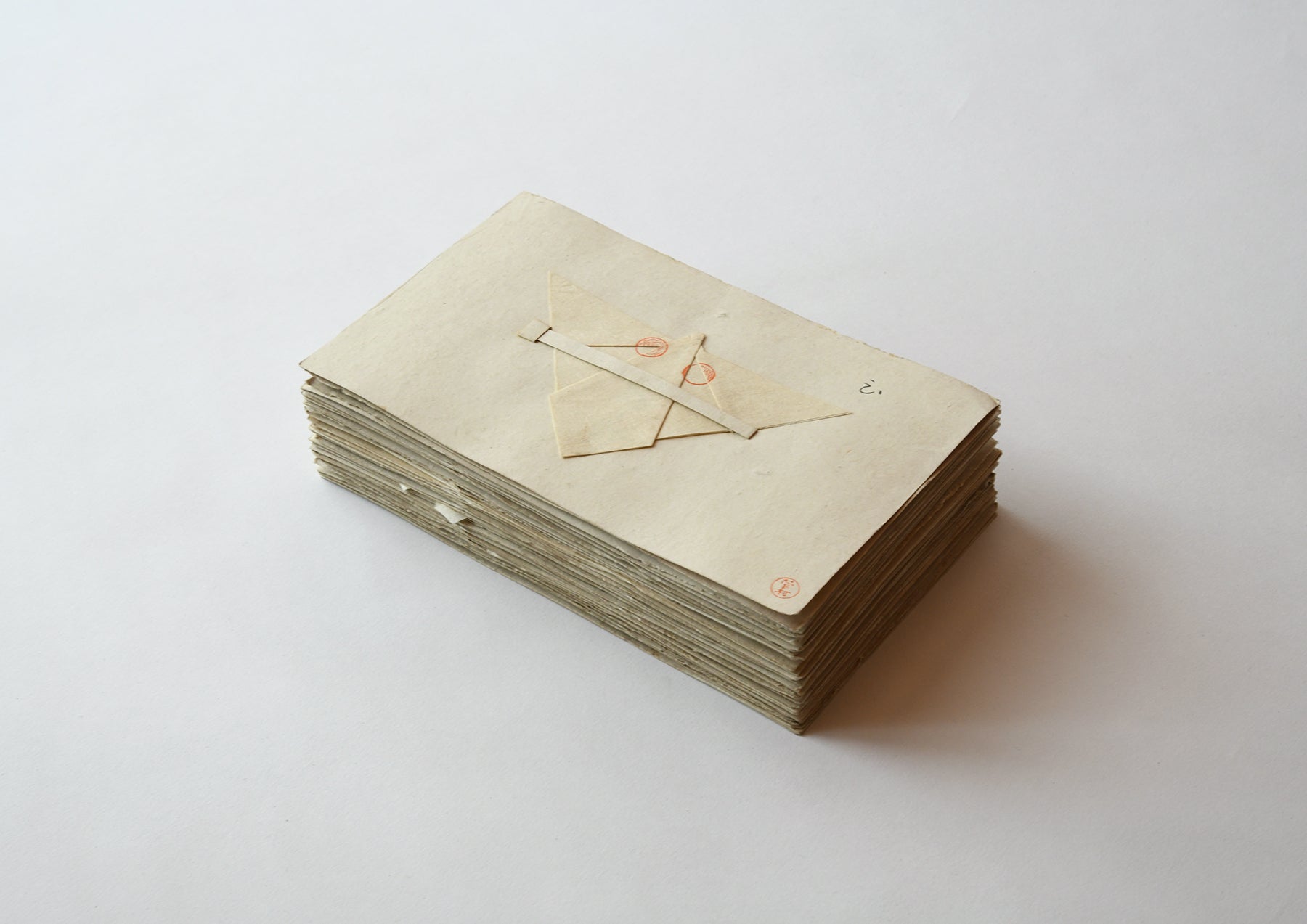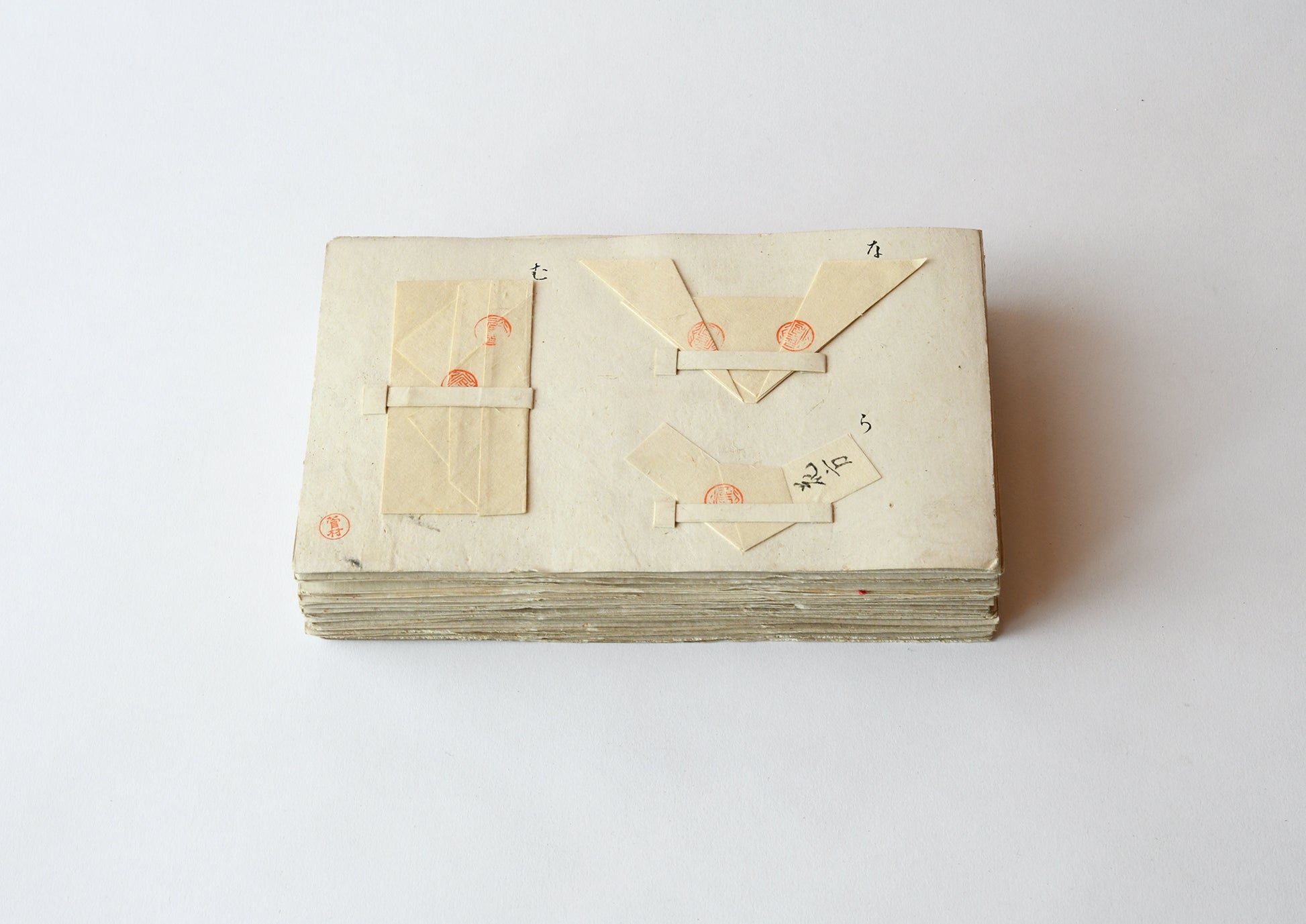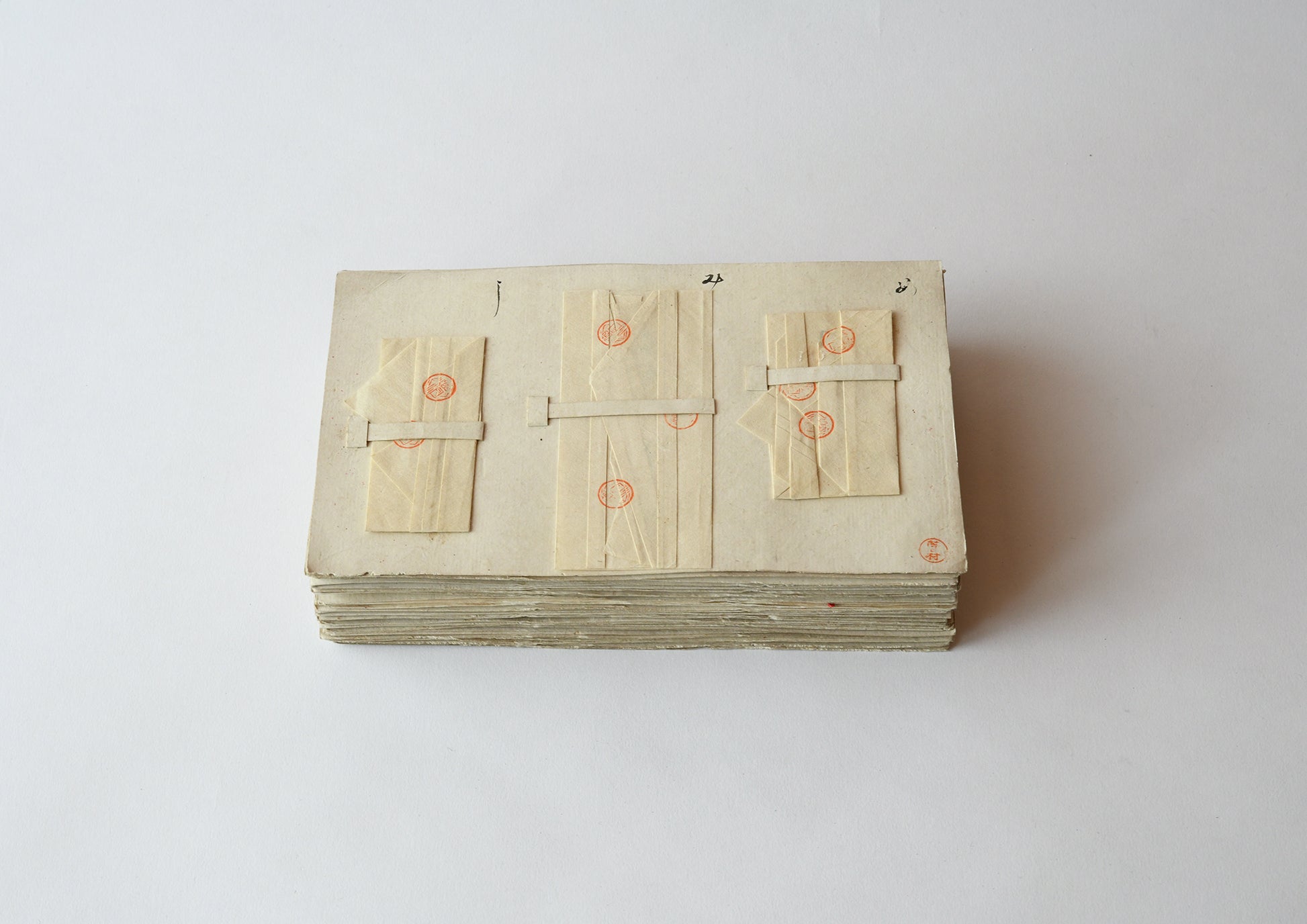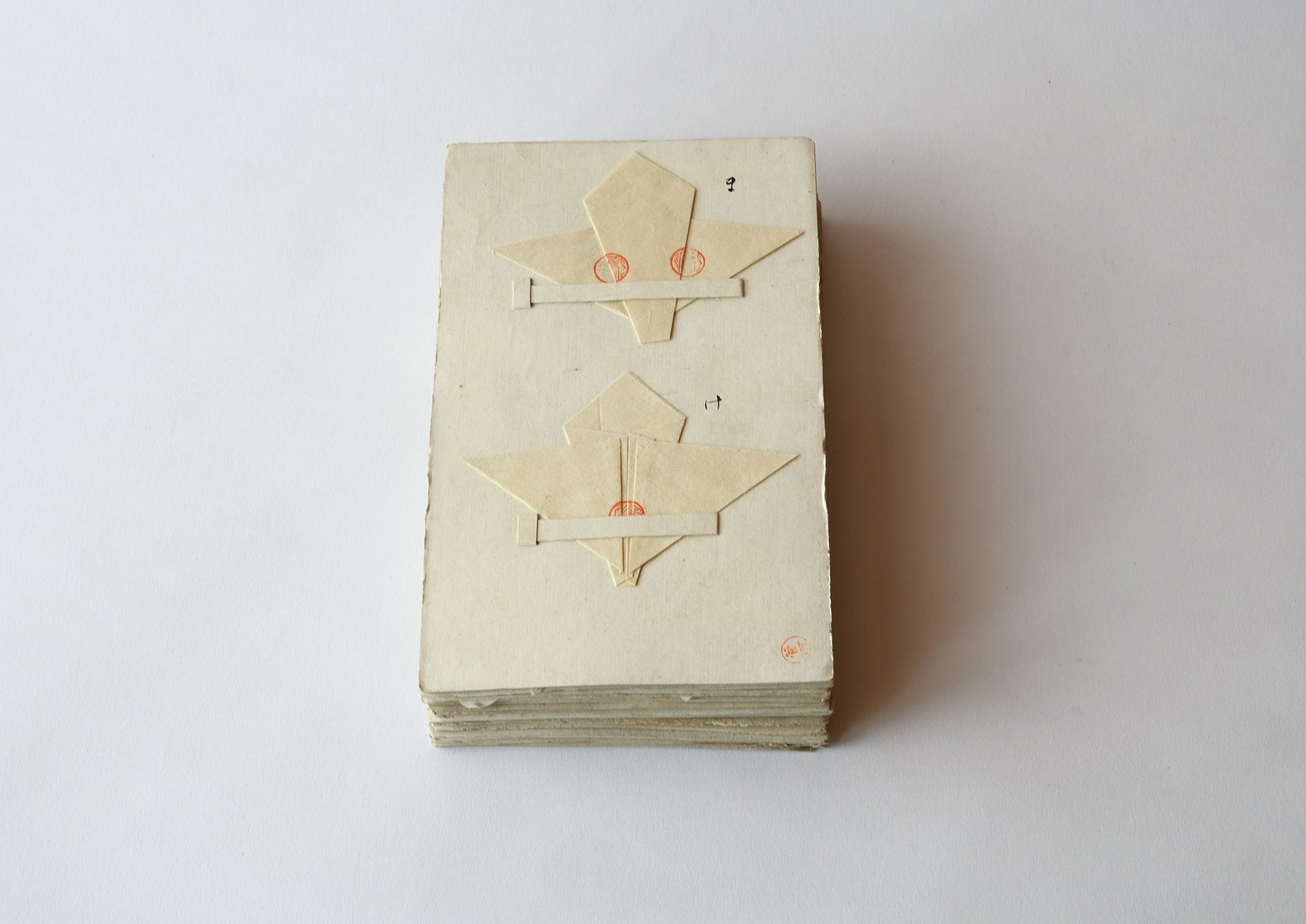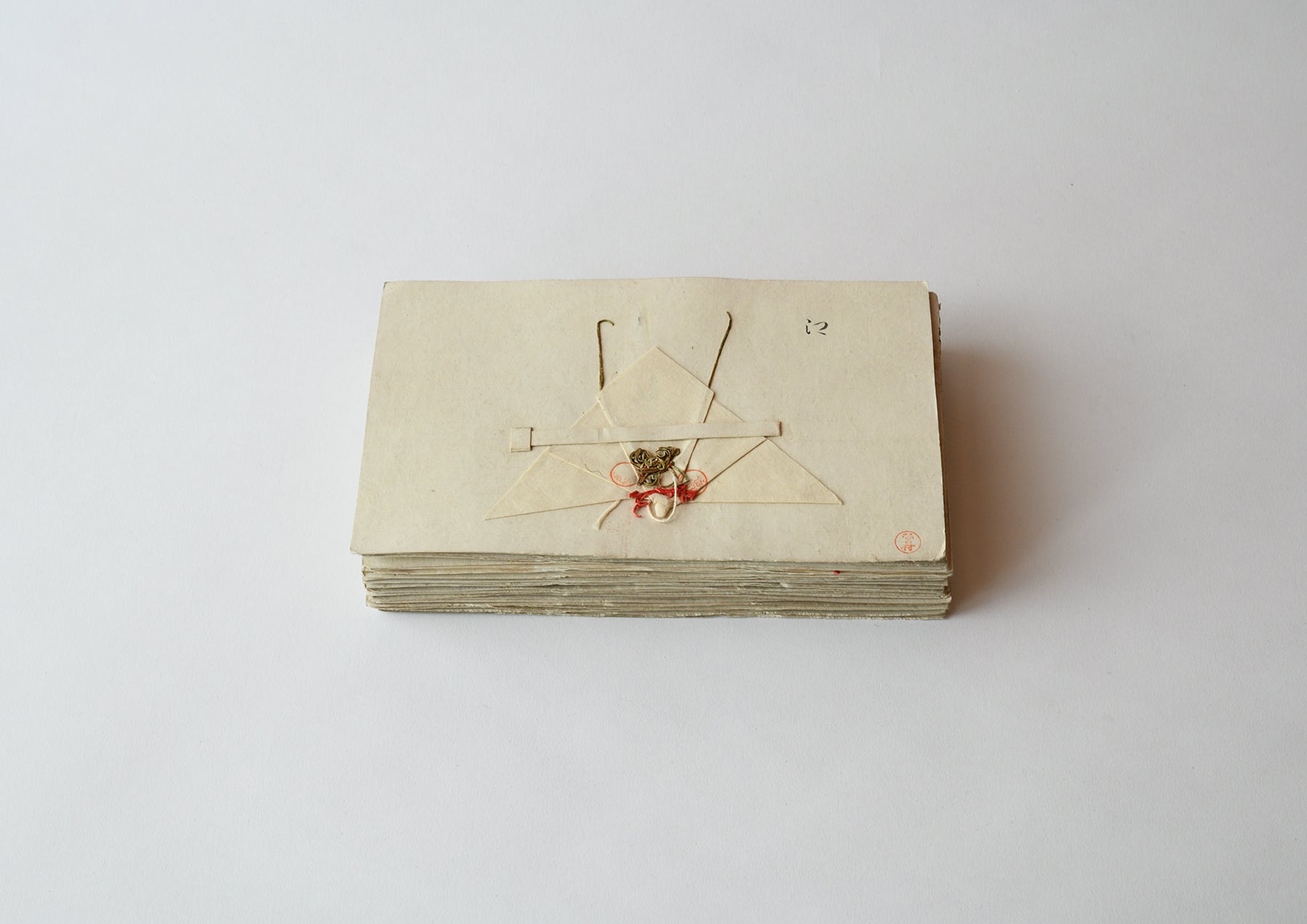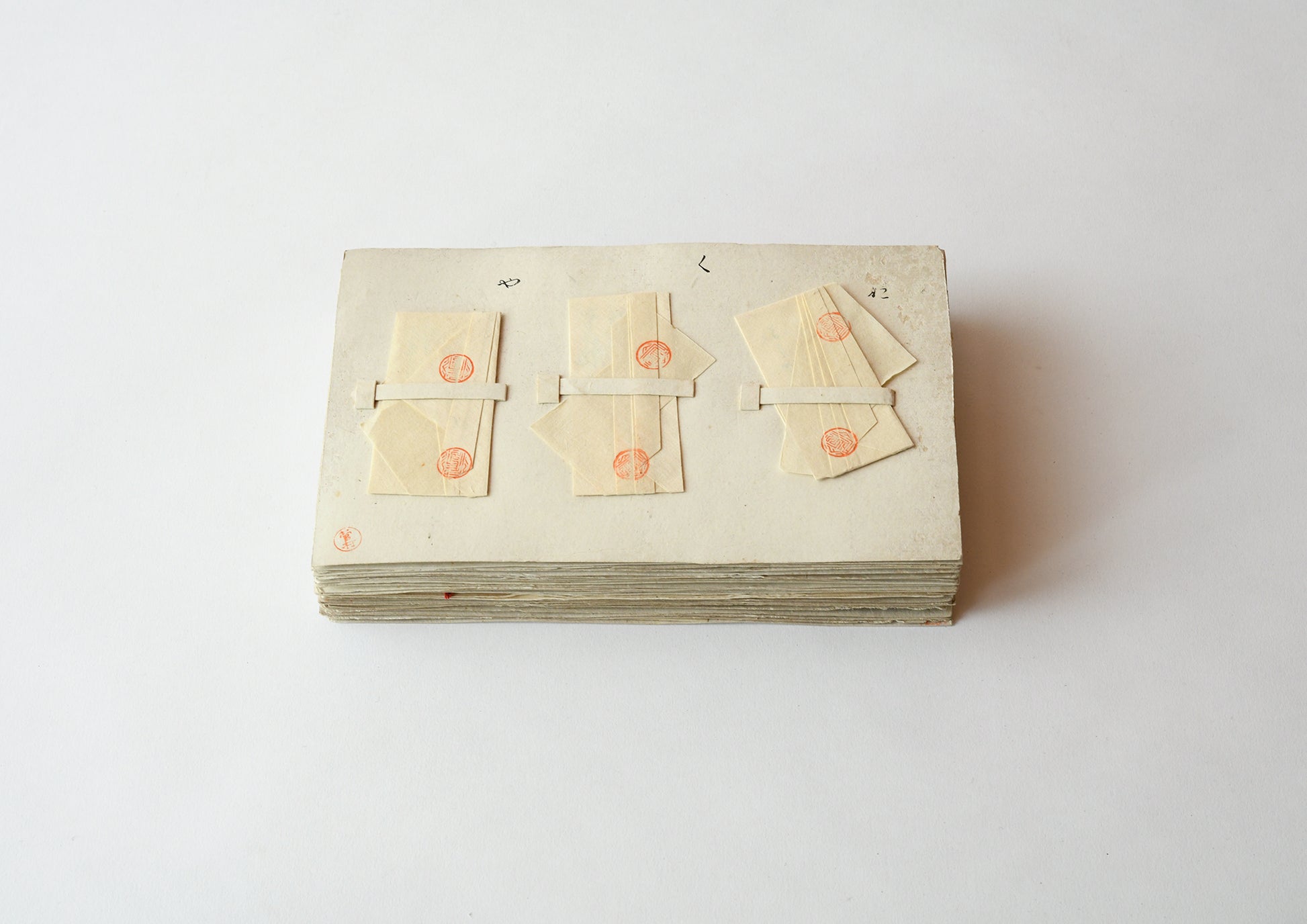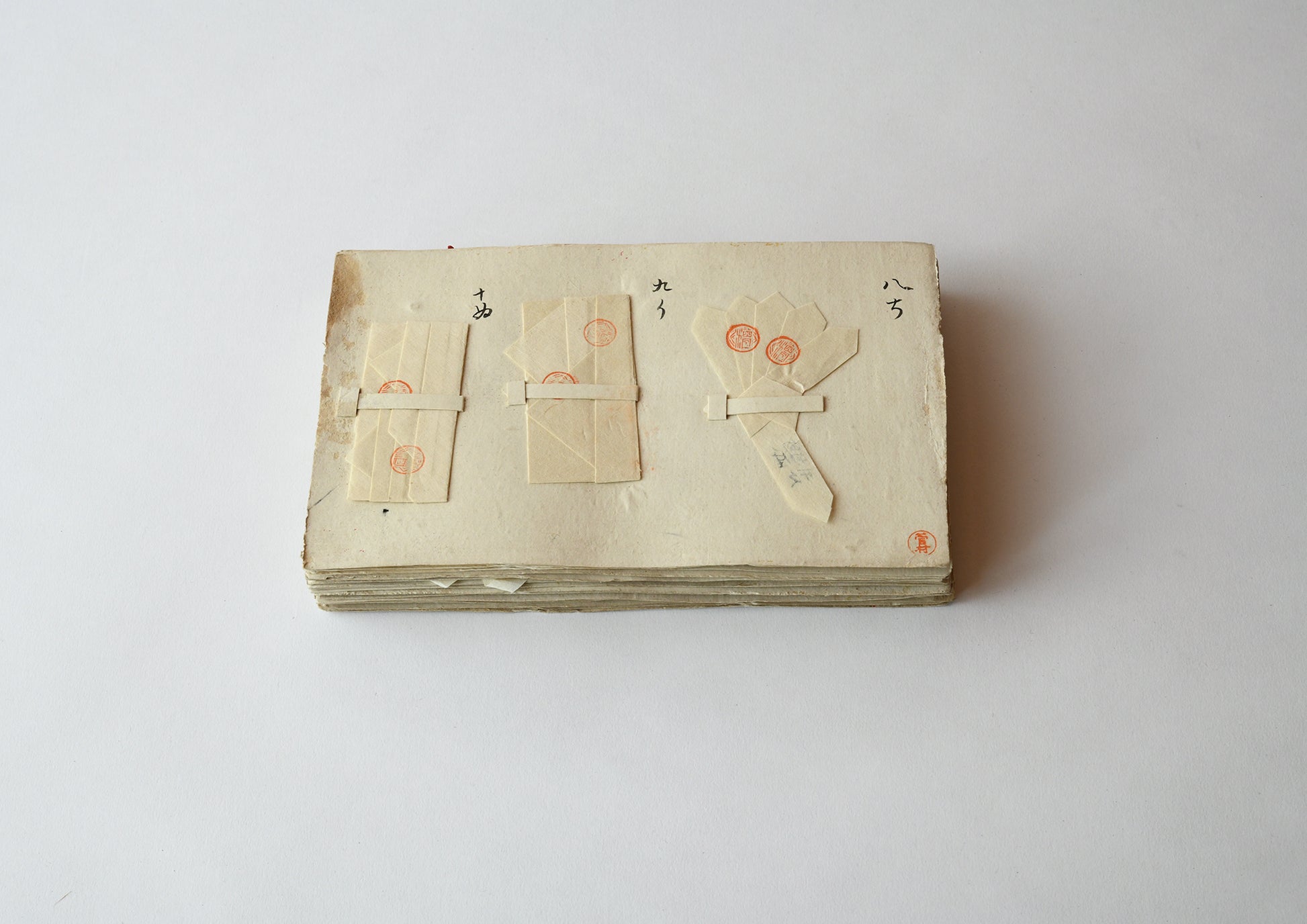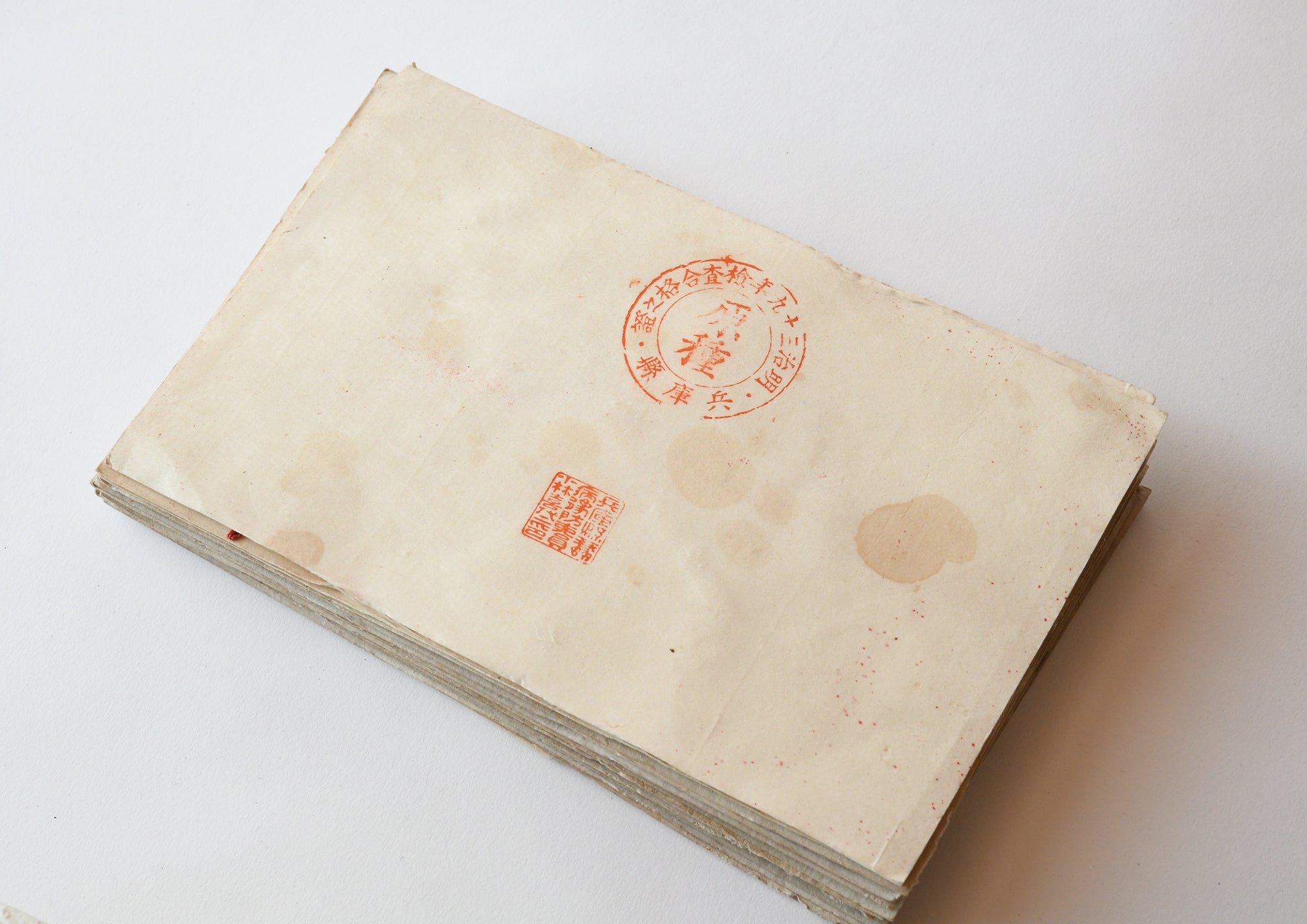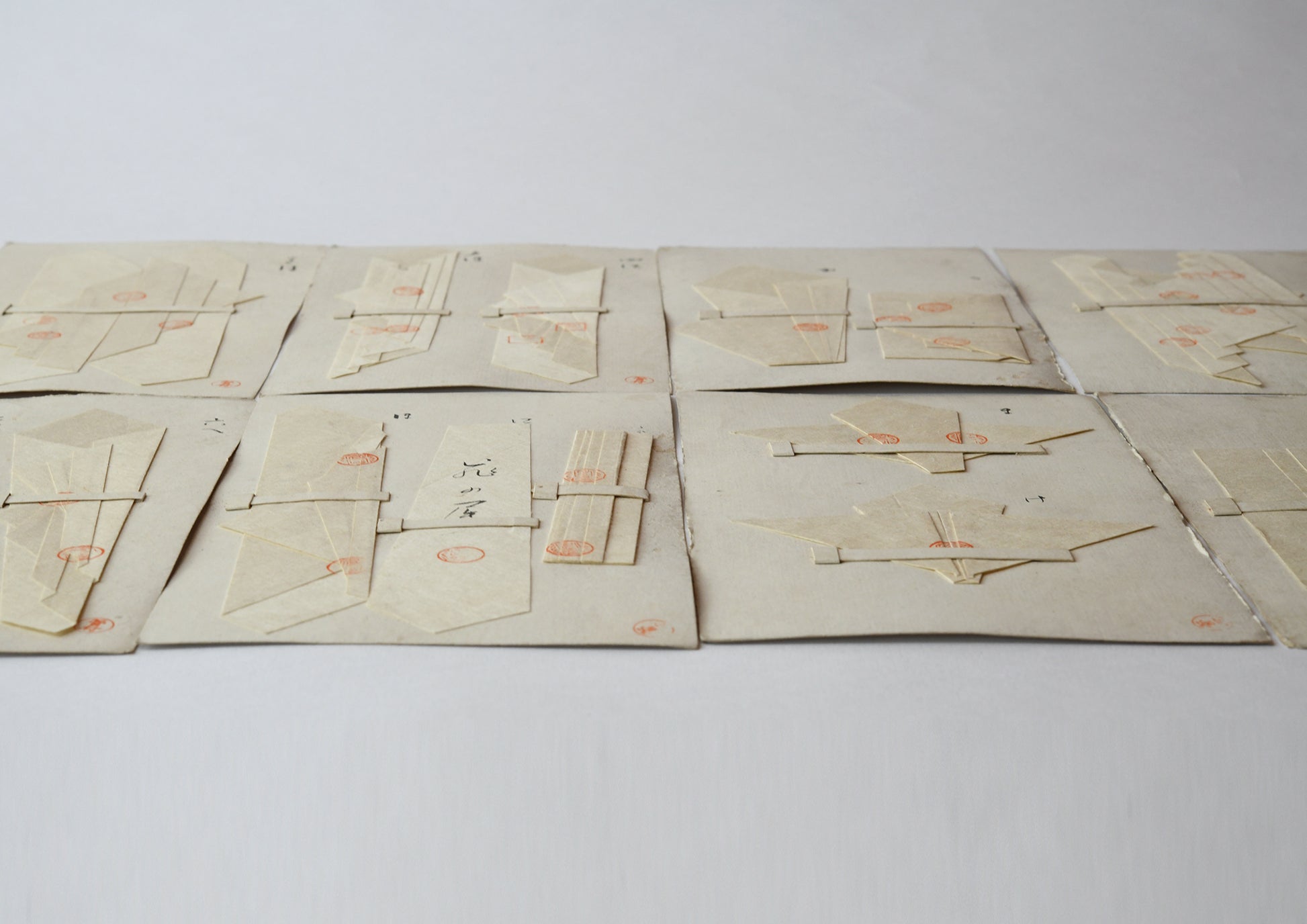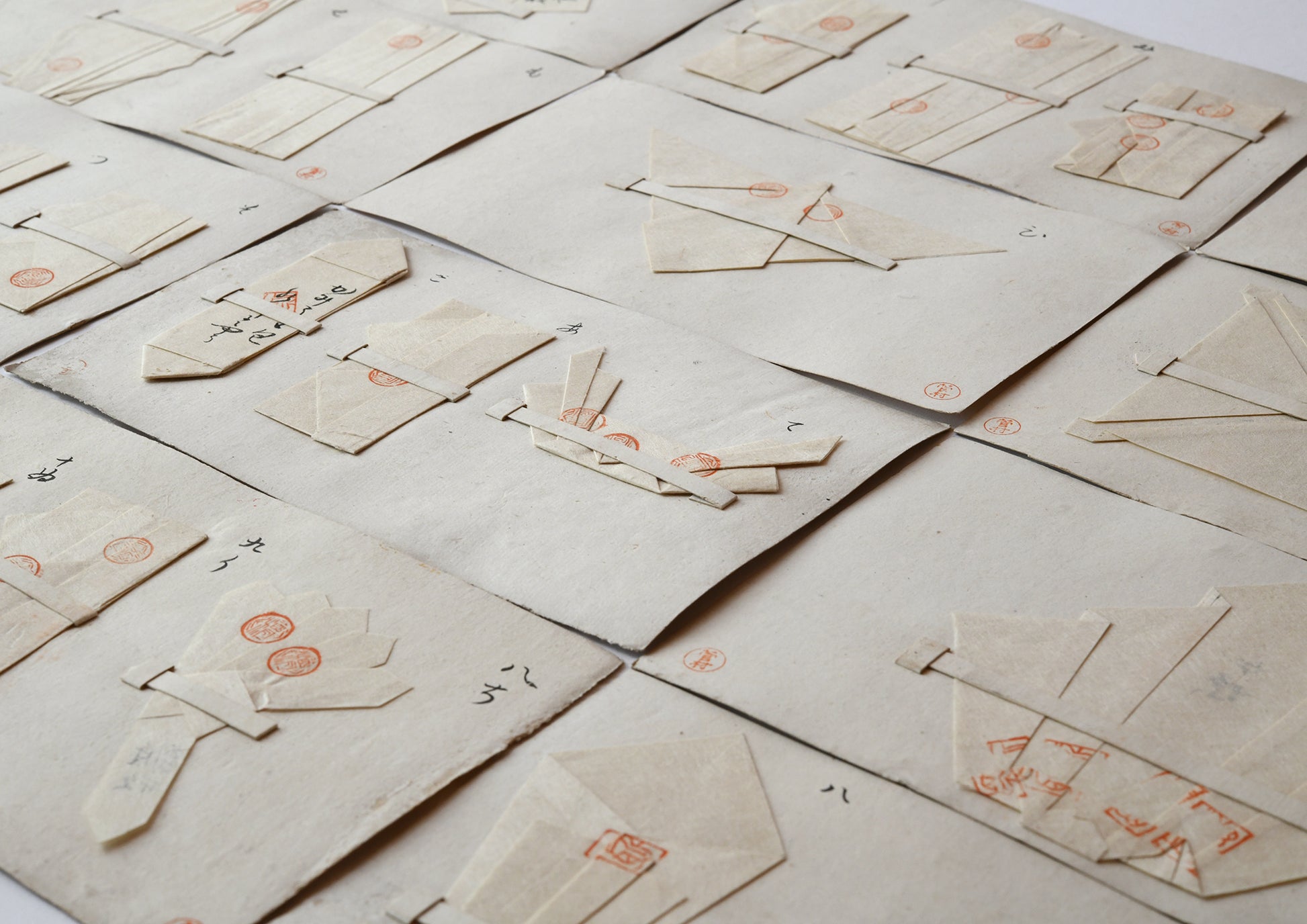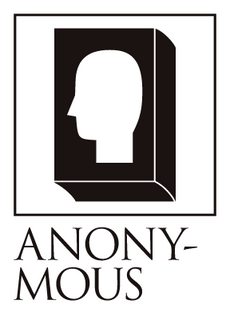Origata samples from Tajima
Bibliographic Details
- Title
- Origata samples from Tajima / 但馬の折形標本
- Artist
- Unknown / 不明
- Publisher
- Unknown / 不明
- Year
- Around 1906 / 明治39年頃
- Size
- w230 × h140 × d60mm
- Weight
- 440g
- Pages
- 38 unbound cards / 38枚の独立したカード
- Language
- Japanese / 日本語
- Binding
- Cards in a wooden folding case / カードタイプ、木製の拵帙
- Materials
- Japanese paper / 和紙
- Condition
- Fine
37 types of folded specimens.
The backing paper says "In a snowy region"
There was a story that was nurtured.
This is a sample book of origami stencils passed down among the people. Its style and origin are unknown, but because it is a handmade book and not a published work, it is a unique gem and the only one in existence in the world.
Opening the simple wooden box, you will find 37 types of origata (folded shapes) that have been painstakingly folded on top of handmade washi paper. Although it is called a set, they are not pasted onto a backing with glue, but are only temporarily held in place with "paper fasteners," so you can take each one out and unfold them. There are seals stamped on the folds, and on the backs are written in ink the names of each, such as "Male Butterfly in Front of the Altar" and "Female Butterfly in Front of the Altar." There are no signs of wear, and it is clear that this homemade book has been well-cherished.
The mounts on which the origami are placed are thick, handmade Japanese paper that is soft like cotton paper, and some of the mounts have red stamps on the back, such as "Hyogo Prefecture Kinosaki County Silkworm Seed Production and Sales Association Seal" and "Hyogo Prefecture Meiji 39 Inspection Passed Certificate Original Seed." This is proof that the product has been tested for microbe disease, which infects silkworm moth larvae, and tells us that the mounts were originally "silkworm egg paper." Also known as "silkworm egg paper" or "seed paper," "silkworm egg paper" is a special Japanese paper on which silkworm moths lay their eggs.It is about 10 sheets of paper thick.It is a sturdy handmade washi paper. At the beginning of the process of making raw silk, the seed shop (a specialized silkworm egg manufacturer) hands over the "silkworm egg paper" (with eggs attached to a backing) to the silkworm farmer, who then plants mulberry trees in his field to receive the silkworms for the "Okaiko-sama" to eat, and lives with the silkworms. For poor farmers, the cash income from sericulture was a great hope for escaping poverty.
A little more about the mount. The red seal on the back reads "Meiji 39," so this mount is either used for sericulture around 1906 or was handmade Japanese paper that was not used for some reason. Kinosaki County, Hyogo Prefecture, was once called Tajima Province and was a region where sericulture was popular. In the mid-18th century, it developed as a raw silk production area for the high-quality silk fabric "Tango Chirimen." Uegaki Morikuni, who was born in Tajima in the late Edo period, traveled all over Japan to help poor farmers in Tajima who could not make a living from farming alone due to the deep snow, and published "The Secret Records of Sericulture" in three volumes, which scientifically summarized the sericulture techniques he had observed. Siebold, who noticed it, brought it back to the Netherlands, and in 1848, it was translated into French by Hoffman, the Dutch royal interpreter, and published in Paris and Turin. Not only did it help the European silk industry, which was devastated by the subsequent epidemic of "microbe disease," but it also helped Japan become the world's largest exporter of raw silk after the Meiji Restoration. The sericulture industry in Tajima developed through regional division of labor, with sericulture in Tajima, silk reeling in Tanba, and weaving in Tango, but in the Showa era it was pushed out by synthetic fibers such as nylon and imported silk, and finally came to an end.
This is why the "Origami specimen" was made by repurposing washi paper with this background into a mount. The creator is unknown, but there was probably a person with a good sense of etiquette among the silkworm farmers, seed dealers, or those who had access to them. The silkworm paper that carried the life of "Okaiko-sama" would surely have been treated with a sense of reverence, even if it was unused. Even if, due to war and the appearance of chemical fibers, a large amount of silkworm paper that had lost its user was left somewhere in the Tajima ecosystem surrounding silkworm farmers and silk.
Silkworms do not exist in the wild, and they cannot survive without the help of humans. Without the income from sericulture, poor farmers would not be able to survive the cold winter. Their symbiotic relationship, where they support each other, may have something in common with the origami of wrapping hearts in paper and giving them as gifts.
Text by Osamu Kushida
Related Products:"Ogasawara Style Noshi-ori Form Specimen"
